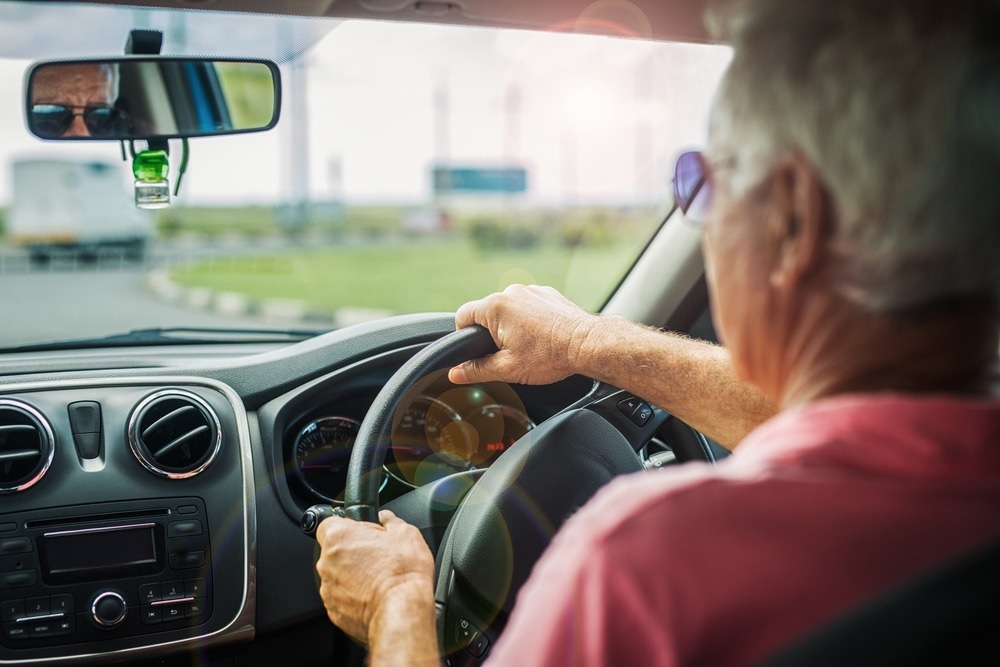In a recent study published in JAMA Network Open, a group of researchers investigated the association between cannabis, simulated driving, and concurrent blood tetrahydrocannabinol (THC) levels in older adults.
 Study: Cannabis and Driving in Older Adults. Image Credit: Dusan Petkovic/Shutterstock.com
Study: Cannabis and Driving in Older Adults. Image Credit: Dusan Petkovic/Shutterstock.com
Background
Epidemiological research indicates that cannabis increases vehicular accident risks through behaviors like weaving and slower reaction times, with most studies focusing on younger individuals.
The impact on older adults, a group with rising cannabis use, is less understood and may be more pronounced due to age-related cognitive and metabolic changes and medication interactions. Older, long-term users might also show tolerance effects. The role of Delta-9-THC is key, as it affects driving ability, yet the exact relationship between THC levels and driving performance remains unclear despite varying legal THC limits for drivers.
Further research is needed due to the limited generalizability of the current findings, as most participants were White males, and to investigate the effects of cannabis on driving in older adults using more sensitive proxies and larger, more diverse samples.
About the study
The present study was conducted in Toronto, Canada, from March to November 2022, adhering to the Strengthening the Reporting of Observational Studies in Epidemiology (STROBE) guidelines for cohort studies. Participants aged 65 to 79 were recruited via public transit and social media ads. After giving written consent and meeting inclusion criteria, they engaged in a practice session, which included a driving simulator test. This session also gathered demographic information, including race and ethnicity.
The study followed a within-participants counterbalanced design, exploring the relationship between cannabis use, simulated driving, and blood THC levels. Participants underwent two test sessions, each lasting approximately 7 hours, with a minimum 72-hour interval in between. They were instructed to abstain from alcohol, cannabis, and other recreational drugs for 12 hours before each session.
The sessions involved two conditions: one where participants smoked their own legally purchased cannabis in a dedicated negative pressure room, and another control condition where they rested in the same room without smoking.
Prior to each session, participants were tested for abstinence from alcohol and drugs using a breathalyzer, saliva sampling, and a 14-panel urine screen. The Marijuana Withdrawal Checklist was used to assess cannabis withdrawal levels. Participants then operated the driving simulator and provided blood samples for THC and metabolite measurement before and at 30 and 180 minutes after either smoking cannabis or resting.
After each driving test, participants underwent cognitive and subjective assessments and completed visual analog scales to evaluate their willingness to drive and perceived impairment. They smoked self-provided cannabis joints to their comfort level, with the consumed amount and THC/ cannabidiol(CBD) content quantified for analysis. Participants received compensation for their involvement.
Study results
In the present study, 31 participants (21 males and ten females, predominantly White) with an average age of 68.7 years completed all procedures. The results showed that 30 minutes after smoking cannabis, there was a noticeable increase in Standard Deviation of Lateral Position (SDLP) and a decrease in mean speed (MS) compared to the control condition. These effects were not observed 180 minutes after cannabis use. This pattern was consistent in both single-task and dual-task scenarios.
Specifically, in the single-task condition, the effect size for SDLP was 0.30, with a 95% confidence interval (CI) of 0.37 to 2.93. For MS, the effect size was −0.58, with a 95% CI of −3.56 to −1.36. Similarly, in the dual-task condition, the SDLP effect size was 0.27.
Blood THC levels increased 30 minutes post-cannabis consumption, although these levels did not correlate with changes in SDLP or MS. The average potency of cannabis used by participants was 18.74% THC, which is higher than what is typically studied. The increase in SDLP and decrease in mean speed were consistent with previous findings on the impact of cannabis on driving.
The change in SDLP was similar to that observed in studies of alcohol-impaired driving, where a breath alcohol concentration of 0.05% led to comparable SDLP increases. However, in the dual-task condition, the changes were less pronounced than those seen with a 0.05% breath alcohol concentration.
The study also found that the decrease in mean speed after cannabis use might be a compensatory change in response to the participant's awareness of their intoxication.
Overall, the data indicated that cannabis consumption does impact driving performance in older adults, particularly in terms of increased weaving and reduced speed shortly after use. These findings underscore the importance of understanding the specific effects of cannabis on older drivers, given the increasing prevalence of cannabis use in this age group.